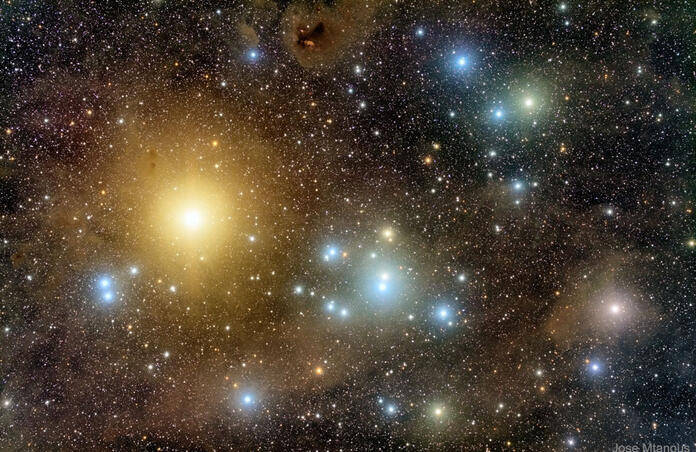Observation of Stellar Clusters Disobeying Newtonian Gravity

On the 26th of October 2022, Pavel Koupra et al published a paper discussing some unusual observations made late last year in regards to the open cluster Hyades and NGC 752. In response to these, the paper proposes a valid use case for the alternative gravitational model known as Milgromian mechanics. They find that for these, as well as Praesepe, Coma Berenicus and COIN-Gaia 13, this approach is able to account for these discrepancies.
Open clusters are very small clusters of young or old stars that can be found within spiral and irregular galaxies. These form when many stars all quickly form within the same nursery, quickly blowing apart the interstellar gas and halting further formation. Due to their open and diffuse structure, these clusters will quickly dissipate soon after birth. During this process, stars leaving the cluster tend to accumulate within two tidal tails that will emanate from the cluster, due to nearby tidal interactions. One will trail behind, while the leads in front.
The paper discusses observations made in 2021, which found that the tidal tails in certain open clusters contained asymmetries. The front tail of the two that form contained significantly more stars than the back tail. Within Newtonian mechanics, the process is entirely statistical, and so one would expect to observe roughly equal quantities within the leading and trailing tails. While it is acknowledged that certain perturbations may also lead to the observed asymmetry, the fact that both Hyades and NGC 752 were affected in the same way, makes this option exceedingly unlikely.
Typically, it is quite challenging to isolate the signals of such tightly packed stars from one another. As such, the team used an adaptation of the convergence point (CP) method to identify certain members within the cluster. This method assumes that, as all bodies are gravitationally bound, they will share space velocity, their radial velocity with respect to the sun. As such, they will all appear to approach a common point known as the vanishing point. This method has been used to determine the distances to various clusters.
The amendment to this, developed by Tereza Jerabkova, is known as the compact convergent point (CCP) method. This approach uses a type of N-body simulation of the cluster which is able to map the positions of individual stars. This data found that there appeared to be a heavy bias in favour of the front tail. This outcome could not be explained by Newtonian models.
Instead, the paper explores an alternative avenue of modified Newtonian mechanics, known as Milgromian mechanics. This approach was first devised by Mordehai Milgrom, as an alternative solution to dark, as to why the velocity curve of stars orbiting the galactic centre do not obey Newton’s law of gravitation. The premise was that while Newton’s laws were confirmed to apply to objects with high acceleration near the galactic centre, we had yet to verify them for objects with extremely low acceleration, nearer the outer edge of the galaxy. While a vast simplification, a key difference is that he proposed the gravitational force experienced by a body in orbit to be proportional to the square of its centripetal acceleration, as opposed to just the centripetal acceleration. This would fully account for the discrepancy, and has also been used in the past to accurately describe certain phenomena.

From here, it appears that the discovery marks another one that is unlikely to be explained by Newton’s models, providing further evidence that amendments would have to be made at those scales. The team acknowledge that their measurements covered a small age range for open clusters, 60 – 200 Myr, and states that further investigations will be required over a larger range. They also note that with the increasing likelihood that Milgromian mechanics will play a vital role in our future understanding of cosmic systems, it necessitates the development of N-body code that is capable of handling these models.
--
Cover Image: Jose Mtanous
Journal Source: P. Kroupa et al, Asymmetrical tidal tails of open star clusters: stars crossing their cluster’s práh† challenge Newtonian gravitation, Monthly Notices of the Royal Astronomical Society, Vol. 517, No. 3, 2022
